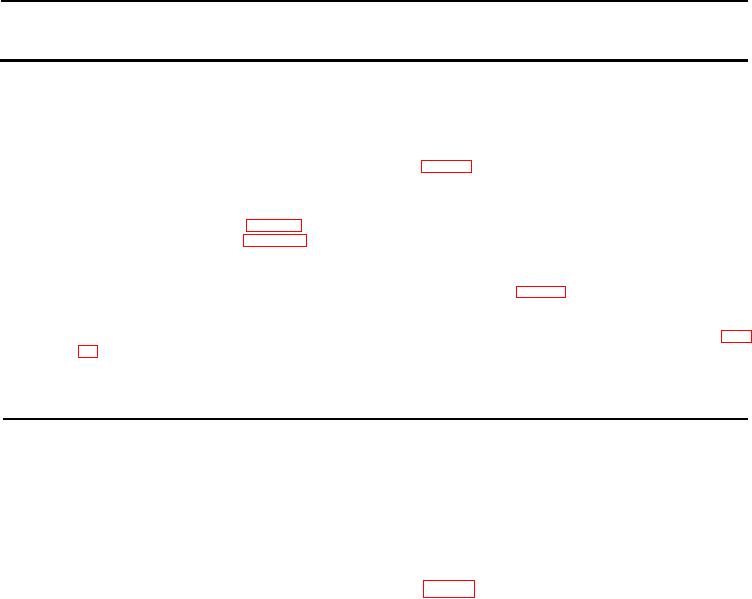
TM 5-6625-2691-13&P
Table 4-2. Troubleshooting (Cont'd)
MALFUNCTION
TEST OR INSPECTION
CORRECTIVE ACTION
3. RADIO INTERFERENCE
CAUTION
Do not rely on ground or,safety devices to prevent accidents. Electrical circuits and equip-
ment are potentially hazardous. Personnel should always exercise caution to prevent injury
or possible death due to electrical shock.
Step 1. Test the filter capacitor for leaks and shorts using a multimeter (para 7-2).
Replace defective capacitors. If test equipment is not available and interference is indicated, isolate the
cause of interference by the trial-and-error method of replacing each capacitor in turn until the cause of in-
terference is located and eliminated.
Step 2. Inspect and test selector switch (para 4-24).
Replace faulty switch (para 4-24).
4. LOAD DROPPAGE
Step 1. Inspect for a defective fuse by removing the three holder caps. Turn the caps counterclockwise and pull the fuses out. Inspect the
fuses for burns, cracks or breaks. Test the fuses for continuity using a multimeter (para 7-2).
Replace a defective fuse with a fuse of the same rating and size. Replace fuse holder cap by screwing full
clockwise until snug. Do not overtighten.
Step 2. Inspect the selenium rectifier for bum marks, breaks or other damage. Test the rectifier for continuity using a multimeter (para
Notify direct support maintenance personnel for replacement action.
Step 3. Be aware of any strange ordors.
If acrid odor is present do not operate the set, refer to higher level maintenance for replacement of rec-
tifiers.
Section VI. RADIO INTERFERENCE
4-14. General Methods Used to Attain
proper radio suppression.
Proper Suppression
4-15. Interference Suppression Compo-
Essentially, suppression is attained by providing a
ments
low resistance path to ground for the stray currents.
Suppression is attained by grounding the motor
The methods used include grounding the motor frame
frame and by using filter capacitors. Sparking and
and using filter capacitors. Refer to TM 11-483 for
other electrical disturbances go through filter capaci-
definitions, purpose, source and methods used to obtain
tors (fig. 4-2), and are quickly grounded and suppressed.

